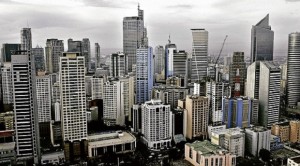
In a new report Monday, the International Monetary Fund (IMF) noted that Southeast Asia’s growth momentum lost steam late in 2013 and would continue to do so this year.
“In summary, with the exception of the Philippines where growth picked up, Asean growth has slowed most recently on account of cyclical factors,” the IMF said in its Asia-Pacific regional outlook.
Last year, the Philippines had the region’s fastest-growing economy, expanding by 7.2 percent. This was the second-best showing in Asia next to China.
This year, the IMF said growth in the region would remain uneven as a result of changing tides in the global economy and separate domestic issues that weigh on individual markets.
For instance, in Indonesia, its weaker currency as a result of a shortage of foreign exchange income would lead to higher borrowing costs especially for companies with foreign-denominated loans. Meanwhile in Thailand, growth may slow as a result of political tensions, which could lead to lower private consumption and erode investor confidence.
The Philippines, for its part, showed resilience in the face of unprecedented challenges, the IMF said. Supertyphoon “Yolanda” late last year, which caused infrastructure bottlenecks in key areas of Visayas last year, failed to result in a significant slowdown in growth in the fourth quarter of the year.
Higher government spending, particularly for reconstruction efforts in the Visayas, would help provide a boost to economic growth this year, the IMF said.
“Official goals of rapid and inclusive growth will likely provide a boost to growth as infrastructure spending is ramped up in a context where the near-term fiscal deficit target remains manageable,” the multilateral lender said.
The IMF expects the Philippine economy to grow by 6.5 percent this year and in 2015. The Asia-Pacific region, meanwhile, is seen growing 5 and 5.3 percent in the same years, respectively.